28 October 2025
October 30, 2025
NAB Quarterly SME Business Survey - Q3 2025
SME business conditions & confidence rise in Q3
SME business conditions rose 7pts in Q3, more than retracing the fall in Q2. The result was driven by strong gains in trading conditions and profitability along with a more moderate improvement in employment. Conditions now sit in positive territory for the first time in more than a year. Business confidence rose for a fourth consecutive quarter to be its highest since 2022. Despite the improvement, both confidence and conditions remain below their long run averages. The survey shows that larger SMEs are better placed than smaller firms across most key indicators. Larger SMEs leading in confidence, conditions (employment, trading conditions and profitability), cashflow and forward orders. While confidence improved across all firm sizes, the smallest SMEs saw a weakening in conditions, weighed down by trading conditions and employment. Both conditions and confidence remain lower than in our broader Quarterly Business Survey (QBS) however the gap narrowed in Q3. Similarly to the QBS, the share of firms reporting labour as a significant constraint on output rose in Q3 and remains elevated. Capacity utilisation edged up but remains lower than reported in the QBS.
Survey Details
- SME business conditions rose 7pts to +2 index points. The strongest gain was experienced by the largest SMEs (up 8pts to +3 index points) while the smallest SMEs fell (down 2pts unrounded to -7 index points).
- By industry, SME conditions improved in all industries except health. The largest gains were in property (up 18pts to +26 index points, its highest level since June 2022), finance (up 15pts) and manufacturing (up 11pts). Conditions are now strongest in property, business services and finance and weakest in wholesale and retail.
- SME business confidence rose 6pts to -2 index points, the highest it has been since September 2022. SME confidence improved across all industries except health. In Q3 half of all industries are now in positive territory, up from two industries in Q2. Confidence was highest in property and accommodation industries and weakest in health and wholesale.
- Across the states, SME conditions rose in every state except SA. In level terms, SA fell from the second strongest state in Q2 to the weakest in Q3. Both WA and Qld had the strongest conditions and sit at their highest levels since 2023. After lagging other states, NSW and Vic have improved, and conditions are at their highest levels since 2023.
- Conditions also improved in Q3 in larger firms (as measured in the NAB QBS). In level terms, conditions and confidence remain relatively weaker in SME firms compared to the QBS, but a larger gain for SMEs did narrow the gap by 1pt in Q3.
- Leading indicators were broadly positive. Forward orders, capex intentions and cash flows improved, however capacity utilisation rose to 80.9% (back above the historical average).
- Cost pressures were flat in purchase and overhead cost growth while labour cost growth edged up slightly suggesting the easing in costs may be slowing.
- Final prices moved down slightly to 0.6% (back to around Q1 2021 levels). The sales margin index improved in the quarter but remains low.
For more information, please see the NAB Quarterly SME Business Survey (Q3 2025) (PDF, 808KB)

NAB Online Retail Sales Index (September 2025)
INSIGHT
On a seasonally adjusted basis the NAB Online Retail Sales Index returned to growth in September

NAB Quarterly Business Survey (Q3 2025)
INSIGHT
23 October 2025
Conditions and confidence positive in Q3
